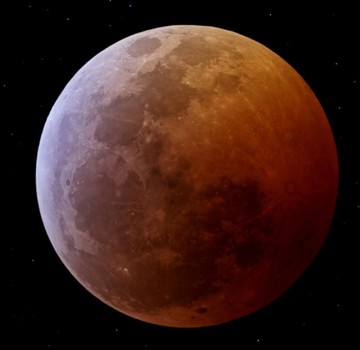Eleven Years on Mars

By Robert Marshall
In the very first issue of Headline Discoveries, released in the spring of 2004, we wrote about the exciting news of the Spirit and Opportunity Mars rovers, landing just months before in January of that year. In an extended article, within the same issue, we expanded on the rovers’ missions, spacecraft features, as well as conditions on the rusty red planet. Remarkably, as of the writing of this article, Opportunity continues to generate power from its solar panels and traverse the Martian terrain even 11.5 years later!
Since Our First Issue
Opportunity has successfully traversed more than a marathon (26 miles) despite several driving scares and, maybe even more remarkable, a mission originally designed to only last 92 Earth days. Spirit, Opportunity’s sister robot, landed near Gusev Crater on the opposite side of Mars just a few weeks prior. Also designed to last 90 Mars days, Spirit returned exceptional geological data before its last communication with driving engineers in March of 2010.
In 2005, NASA sent an orbiter, similar to the 2001 Mars Odyssey satellite, called the Mars Reconnaissance Orbiter (MRO). Together, the two spacecrafts have worked for a combined effort of 23 years to map the entire surface for geological data as well as allow scientists to choose best possible future landing sites. Furthermore, Odyssey and MRO form a communication network increasing bandwidth for surface spacecraft to send back high resolution images faster than direct communication with Earth’s deep space network.
Two years later, in 2007, engineers launched a lander reminiscent of the 1975 Viking missions. Unlike Spirit and Opportunity, NASA’s Phoenix lander has no wheels as it sits on the polar ice cap. Phoenix was designed with a robotic scooping arm so it could dig beneath the Martian surface revealing frozen carbon dioxide ice.
The world held its breath as the much anticipated one-ton Mars Science Laboratory (affectionately known as “Curiosity”) rover touched down at the base of Gale Crater in August of 2012. The nuclear powered robot by far had the most unique entry, decent and landing (EDL). To get through the atmosphere and land on the surface safely, Curiosity utilized a specially designed trajectory adjustment system, the largest supersonic parachute ever designed, eight descent rockets and the infamous sky crane. The largest rover ever sent to the surface of another planet is currently still roving, even making its own driving decisions as cameras survey the terrain and software maps the three-dimensional surface.
Mars Exploration Program
As you can imagine, a lot of exploration and research leading to new discoveries has taken place concerning Mars since our first Headline Discoveries issue. We have NASA’s Mars program to thank. Similar to the Space Race, the Mars program is currently the only existing initiative mankind has to continuously revisit a planet (not the Moon) every few years. Initial instruments on board such spacecrafts were designed to try and find direct evidence of microbiotic life, even if fossilized.
Focus has since shifted towards exploring habitability to try and answer questions, such as “Could Mars have ever harbored liquid water?”. The twin rovers are examples of this because of their geological tools that have helped scientists identify river rock. But new generation robots, such as Curiosity, are starting to be constructed with a more biological purpose: human exploration. Engineers, working with scientists, are designing robots to sniff the air and measure radiation levels as we ourselves, as a species, begin to solve the challenge of a human mission to Mars. If we are to survive not only the journey but live on the surface for months or even years, what are all the dangers we must be aware of and understand? What missions and discoveries will be reported within the next 11 years? Stay tuned as we continue to report on Mars updates and space exploration.
Extension Questions
- Besides being classified as landers, how else is the Phoenix lander similar to the Viking missions? How are they different?
- Go online and watch the NASA video “Seven Minutes of Terror.” How do the EDL engineers differ from careers of those who help drive the rover each day?